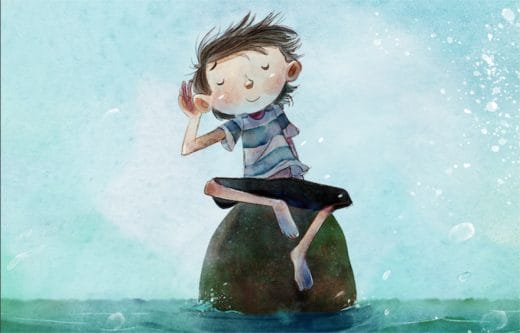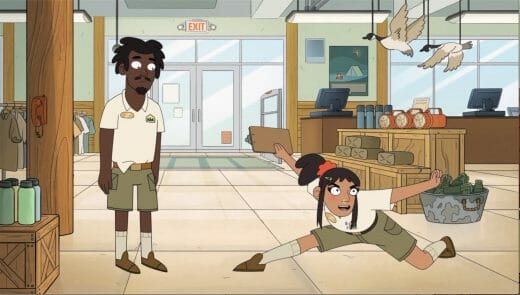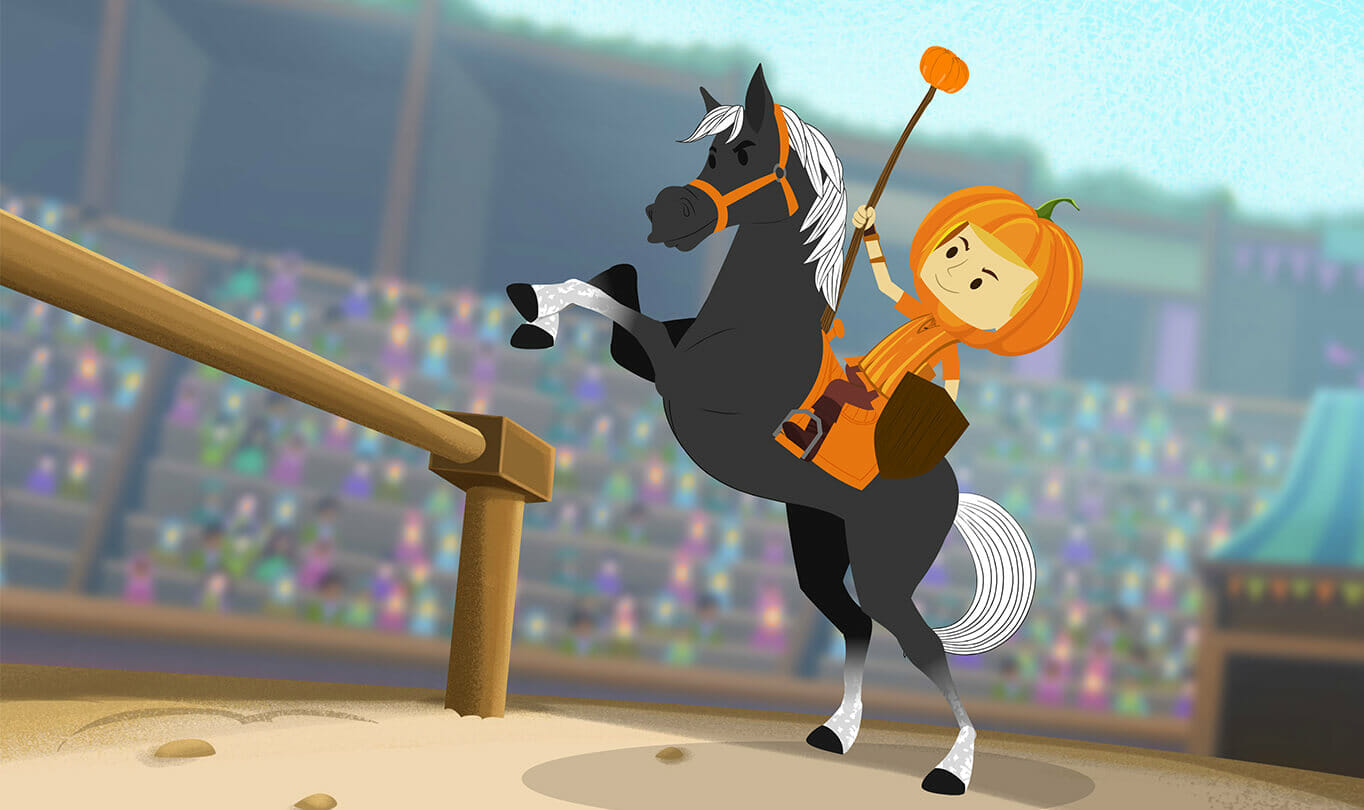
Once upon a time, generations of people of colour and the LGBTQ community grew up without seeing themselves represented in children’s media — whether in illustrated books or on screen. Modern creators faced a challenge greater than any dragon: How to show more kids that they can be the heroes of their stories? New York City-based author and producer Daniel Errico had the courage to rise to the occasion with his Hulu animated series, The Bravest Knight.
Based on Errico’s 2014 book The Bravest Knight Who Ever Lived, the children’s television series follows Sir Cedric (voiced by T.R. Knight) — a pumpkin farmer turned knight who has found his happily ever after married to Prince Andrew (Wilson Cruz) with whom he has a 10-year-old adopted daughter, Nia (Storm Reid). The show has also attracted guest stars including RuPaul, who is voicing a Big Bad Wolf in (traditionally) women’s clothing, and Wanda Sykes as Mona the Mayor.
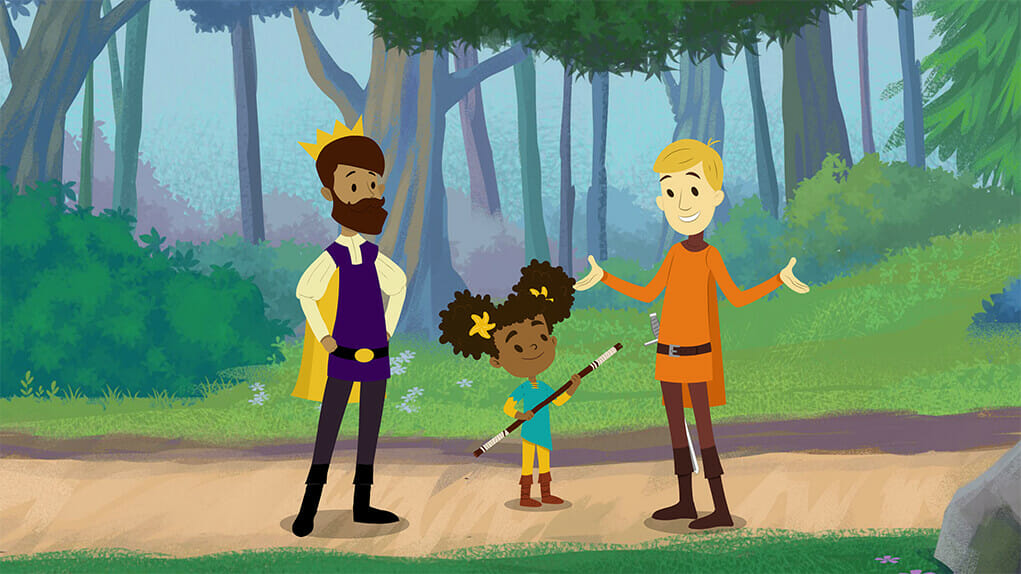
According to Hulu, Cedric is training Nia to follow in his armoured footsteps by sharing “how he transformed from day-time farmer to full-fledged knight” and in the process teaches her “important values such as honor, justice and compassion.” The 13-episode first season of The Bravest Knight premiered with five episodes on June 21, with the rest released on October 11.
Children’s media and animation play an essential role in building empathy — particularly at a time when diversity is met with divisiveness. A recent GLAAD study found young people in the US were significantly more uncomfortable with LGBTQ individuals than they were a few years ago. On-screen representation can play a large role in how groups of people are perceived and how children see themselves.
Why are we slowly tip-toeing towards progress when we’re fully capable of making great strides quickly?
Daniel Errico
Aimed at a preschool-and-above audience, The Bravest Knight is one of the first children’s shows in history to feature an openly gay main character. Additionally, the protagonist and his husband are in a biracial relationship with an adopted daughter of a different ethnicity.
The GLAAD Where We Are on TV Report 2018 notes that LGBTQ representation on television hit a record high last year, with 8.8 percent of series regulars openly identifying as gay, trans or queer. Among those mentioned, people of colour outnumbered white characters for the first time ever. While many now celebrate this level of diversity, for creator and producer Errico the quest to getting Sir Cedric’s story told was harrowing — fraught with publishers, studios and broadcasters afraid to support children’s media with LGBTQ-positive messaging.
“I spent a long time trying to get people to pick [The Bravest Knight] up and I honestly couldn’t even give it away for free — people were so scared of having an openly gay protagonist,” Errico tells us.
“Eventually I had a call with Hulu and it was like the clouds parted. They understood the importance of a message like this and wanted more content like [The Bravest Knight] and were willing to publicly support it.”
Representation in series like Steven Universe’s wedding between Ruby and Sapphire and The Loud House’s couple Howard and Harold McBride have been met with largely positive responses. While this is proof there has been progress, there has also been pushback. The marriage of Mr. Ratburn to his husband on an episode of Arthur earlier this year was widely celebrated on social media, though Alabama Public Television refused to air it as they felt it was a breach of “trust” with their viewership.
Faced with similar barriers throughout the pitching process, Errico thought: “Why are we slowly tip-toeing towards progress when we’re fully capable of making great strides quickly? It is absolutely possible to give proper representation tomorrow if we choose. Why hold back when there are kids today who need to see those characters?”
While Errico himself identifies as a heterosexual cisgender man, he has compassion for the struggle of the LGBTQ community and is passionate about storytelling. A mechanical engineer by training and former investment banker, he quit his job to pursue his dream of working in children’s media. Having noticed a lack of diversity on-screen, he is especially inspired by the stories that haven’t been told before.
“Children’s media was something I always wanted to do but never thought was practical. Then, I reached a certain age and realized it was what I wanted to do with my life and also how much the things I had watched and read growing up had affected me in a meaningful way,” says Errico.
He continues, “That was one of the most inspiring thoughts I ever had: that a book I read as a child shaped my views as adult. This is a way to reach someone that profoundly affects them for the rest of their life and I wanted to be a part of that.”
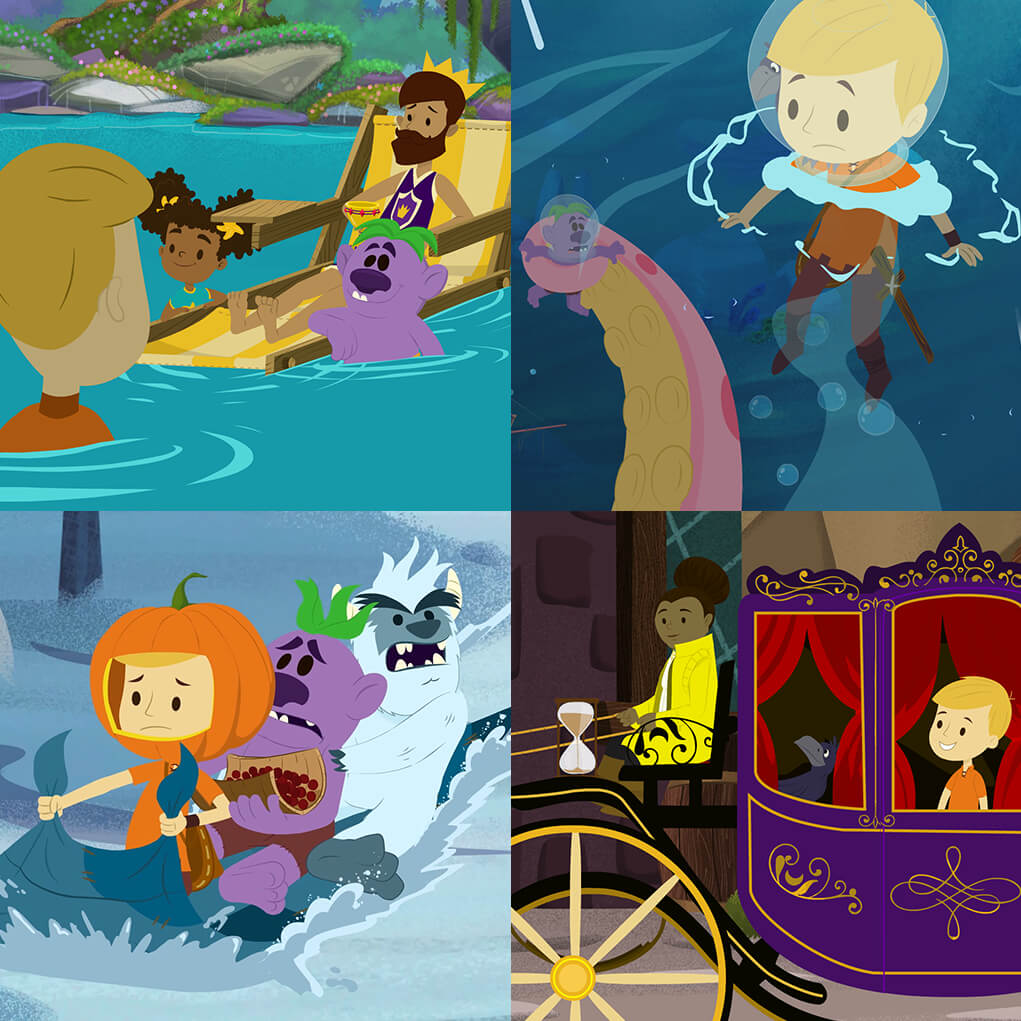
The Bravest Knight was partially inspired by two gay friends of Errico’s who had a fairy tale romance, though their love wasn’t represented in any children’s books. This led him to create the e-book The Bravest Knight Who Ever Lived. Knowing the story didn’t end there, he self-financed a short animation with the help of an artist in Denmark.
Errico is a lifelong animation fan and has dreamed of telling a story arc across an entire season. Given the fantastical nature of fairy tales, the medium also has less limits than live-action when it comes to breaking the rules of physics.
“I think animation is the most engaging form of storytelling we have right now, when it’s done right,” says Errico.
He continues, “With animation, you get to spark kids’ imaginations in ways you otherwise couldn’t. Kids are already primed and ready for their imaginations to run wild. Animation makes it a little easier to bridge the gap between what they’re seeing and what they can think about in their heads.”
Eventually, he connected with the New York City- and Vancouver-based Big Bad Boo animation studio, who work on productions that promote messages of inclusivity and diversity. They found the fact that The Bravest Knight had two gay dads inspiring rather than intimidating, and set out to redesign the characters and prepare for the “Pitch Your IP” session at MIPCOM in 2017. From there, they got the green light from Hulu and the rest is history.
“I get messages on a daily basis from kids, parents, family members who just can’t wait for more episodes,” says Shabnam Rezaei, co-founder of Big Bad Boo, in an interview with Animation Magazine.
She continues, “I think the loveliest messages though are from same-sex parents who finally feel like they have a place to take their kids where they feel normal and all along, those were the people I thought about and think about most. I am ecstatic about that.”
As streaming platforms like Hulu not only multiply but also become more multicultural and inclusive in their representation on-screen and behind the scenes, one can hope LGBTQ-friendly children’s entertainment will be more the norm than the exception. This is thanks to the true knights in shining armour like Daniel Errico and the team at Big Bad Boo, who have paved the way for future creators to get their stories told.
When asked if he had any advice for others hoping to pitch their projects, Errico says, “If you tell the story you want to tell, there’s a strong chance someone else will want to as well. Also, always create. To have your dream fulfilled, you have to put yourself out there — the better you get at that, the bigger advantage you have over everyone else.”
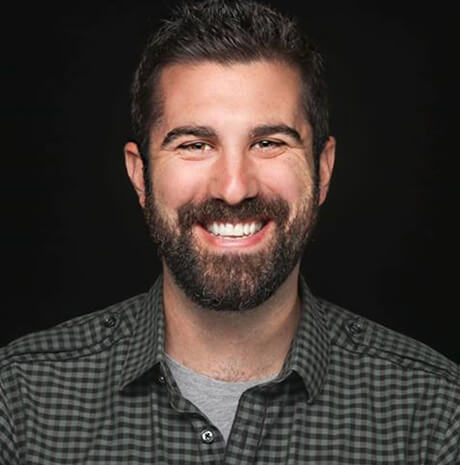
He finishes with: “My advice would also be to actively seek rejections because each one gets you closer to your goal and more immune to them. If you’re the person who can take a ‘no’ and brush it off and move on quickly, you will be a force to be reckoned with. Something I learned early on is people who tell you they don’t like something don’t speak for the world or the market or your audience — they don’t speak for anyone else other than themselves. There’s something very comforting about that.”
While we aren’t quite at ‘happily ever after’ yet when it comes to LGBTQ representation in animation, creators are turning the page on a new chapter. For the next generation, that is not only progress, but promise.


